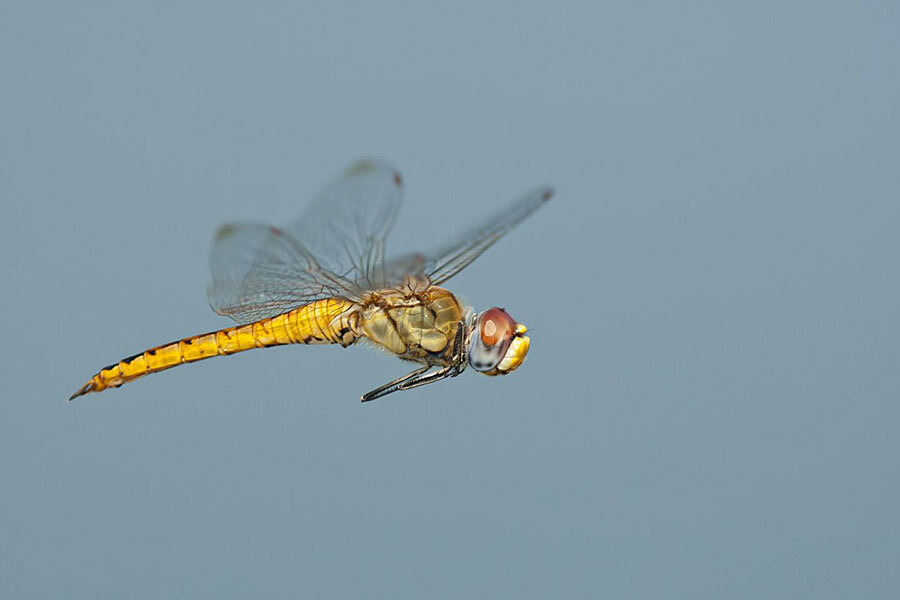This tiny dragonfly migrates the longest distance of any insect
Loading...
A small dragonfly is thought to be crisscrossing the globe, according to new research, potentially migrating distances to rival even birds, the masters of winged migration.
The study, published Wednesday in the journal PLOS ONE, analyzed the genetics of groups of Pantala flavescens from almost every corner of the globe, and found the little beasts were startlingly similar, no matter where they came from.
There was only one conclusion to be drawn: The dragonflies must be launching themselves into the air and gliding, flapping, cruising their way between continents.
“A few years ago, doing my PhD, I was traveling the world and collecting dragonfly samples, and I found this species all over,” says senior author Jessica Ware, assistant professor of biology at Rutgers University-Newark, in a telephone interview with The Christian Science Monitor. “But there was no way to prove anything about migration without genetic analysis.”
In fact, literature had long suggested that Pantala might be crossing the Indian Ocean in swarms.
Then, in 2012, a group of researchers led by Keith Hobson used isotope analysis to support this theory, concluding that the dragonflies were probably migrating between India and Africa, a trip that “could possibly involve a remarkable trans-Himalayan high-altitude traverse.”
And so we come to the latest study, in which Dr. Ware and her team collected Pantala samples from all over the world, carried out genetic analysis and concluded “this is one giant population, worldwide.”
“They were so closely related that it implied they were freely interbreeding – as in, ones from Guyana were breeding with ones in the US, which were breeding with ones in Japan, et cetera,” Ware tells the Monitor.
“Usually, you’d expect there would be neighborhoods, breeding with someone close to you. But it seems they’re just as likely to mate with individuals from another continent.”
Hobson and his team, back in 2012, hypothesized the dragonflies were accomplishing “this remarkable feat by riding high-altitude winds,” and Ware talks in a similar way, marveling at how the bugs “really take advantage of the wind.”
But why would they do this?
After all, it is hardly a risk-free strategy, launching oneself into the air and traversing oceans, when one measures barely an inch and a half in length.
Moreover, as Ware points out, Pantala is unable to swim in salt water, so if they take a tumble on their epic journey, they may wish they had stayed at home.
“It’s a strategy – dispersing far and wide,” explains Ware. “They’re moving around to mix up the genetics, trying to ensure the survival of the species. And it’s worked! They’re on every continent apart from Antarctica.”
Ideally, Ware tells the Monitor, they would expand their genetic tests, encompass the few regions they missed the first time. More isotopic analysis would be great, too.
But the best thing, the work Ware would really love to carry out, to prove these migratory routes and patterns beyond doubt? Transmitters.
And it has been done before, on dragonflies.
A team in New Jersey, in 2007 and 2008, affixed radio transmitters on a bigger cousin of the Pantala, the Green Darner. They leaped into helicopters and tracked the insects as they glided through the ether.
But then the dragonflies flew into Delaware Bay, and the scientists lost their trail.
“Our dragonflies are smaller, too,” says Ware. “I worry that the transmitters would just weigh them down and mean they can’t fly properly.”






